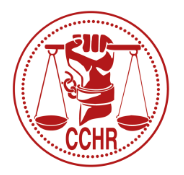What is OCD in children, and how is it treated? What risks are involved in standard psychiatric drug treatment? There may be physical causes for what appears to be OCD, and ways to handle it that are not dependent on psychiatric drugs. How do you know if your child has a physically treatable case of what psychiatrists refer to as OCD?
The NIMH (National Institute of Mental Health) defines obsessive-compulsive disorder as an anxiety disorder. It is characterized by recurrent and unwanted thoughts or repetitive behavior. How does the psychiatric profession treat what they term, OCD, in children? With drugs like Prozac, Luvox, Anafranil and Zoloft.
The effects of these potent pharmaceuticals on children can be devastating. In fact, the first side effect listed by the PDR (Physician’s Desk Reference) for Prozac is suicidality. Other disturbing signs parents are instructed to watch for while a child is on Prozac are anxiety, hostility, sleeplessness, and impulsive and dangerous behavior. In addition, Prozac may cause the development of a life-threatening drug reaction. The treatment, one can’t help but notice, appears more dangerous and dramatic than the symptom it is meant to cure.
Luvox is equally dangerous. Side effects include anorexia, headache, nausea, liver toxicity, and suicidal thoughts. One of the more infamous Luvox patients was Eric Harris, one of the two young men responsible for the carnage at Columbine High School in Littleton, Colorado in 1999.
And although Anafranil is listed as one of the pharmaceuticals to treat OCD in youngsters, netdoctor warns not to give this drug to children under 18 years of age. Why? It is known to increase the risk of aggression, anger and suicidal thoughts. Psychiatrist Barry Garfinkel was arrested and sentenced to six months in prison for his fraudulent study and claims about Anafranil in the late 1980s and early 1990s. One wonders what other dubious studies have been conducted that ushered this and other dangerous psychiatric drugs to market.
And what of Zoloft side effects on a child? The common side effects of this drug are fever, hyperactivity, loss of bladder control, aggressiveness, sinus infection, bloody nose, and red or purple discolorations of the skin. What parent would want their child to suffer through these atrocious physical symptoms? And these are not even considered to be the serious side effects. The serious side effects are suicidal thoughts, panic attacks, hostility or aggressiveness, engaging in dangerous activities and other unusual changes in behavior. One wonders if there are other avenues of treatment for OCD.
First off, the importance of a thorough medical examination by a competent MD (not a psychiatrist) in any child exhibiting OCD must be stressed. A disorder known as PANDAS (Pediatric Autoimmune Neuropsychiatric Disorders Associated with Streptococcal Infections) was identified a little over a decade ago by Dr. Susan Swedo. Apparently Strep infections cause the body’s immune system to create antibodies that attack the basal ganglia (a group of structures that are linked to a portion of the base of the brain, which are involved in coordination of movement). Thus a child with PANDAS may exhibit what is often diagnosed as OCD in children.
The Archives of Pediatric and Adolescent Medicine linked PANDAS conclusively with strep infection, and concluded that this condition responds to antibiotic therapy. One wonders how many innocent children are suffering through the inhuman “treatment” of psychiatric drug therapy, when all along they have been suffering from a treatable physical illness.
If you found this article on “OCD in Children” helpful, you be interested in the following articles:
The Effects of Ritalin on Our Children
Vyvanse Side Effects in Children
Intuniv Side Effects
Free Baker Act Help - Call Us: 800-782-2878
info@cchrflorida.org


0 Comments